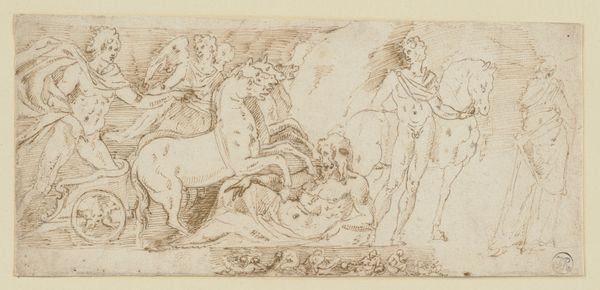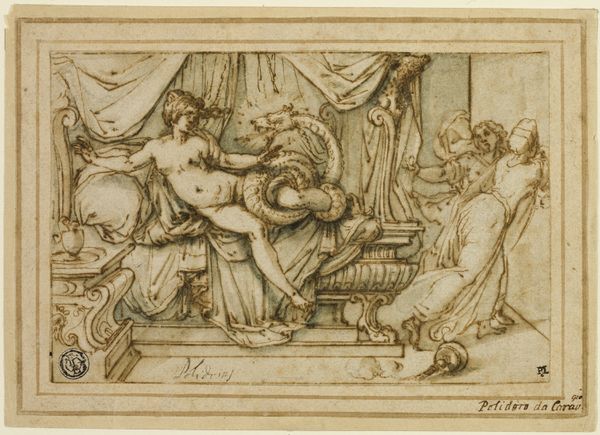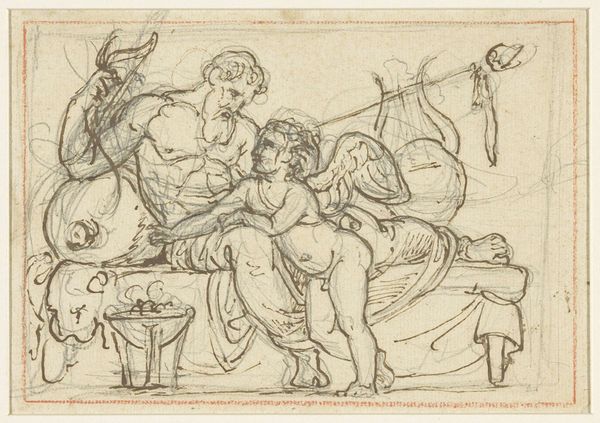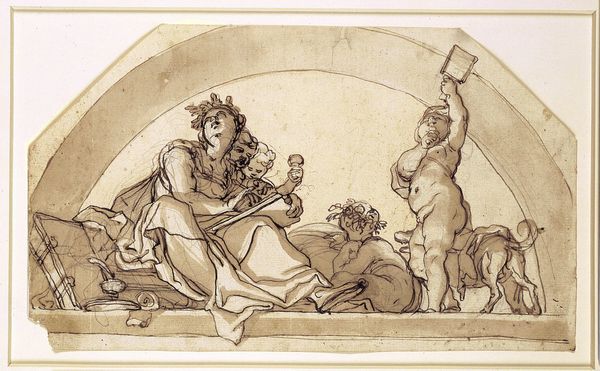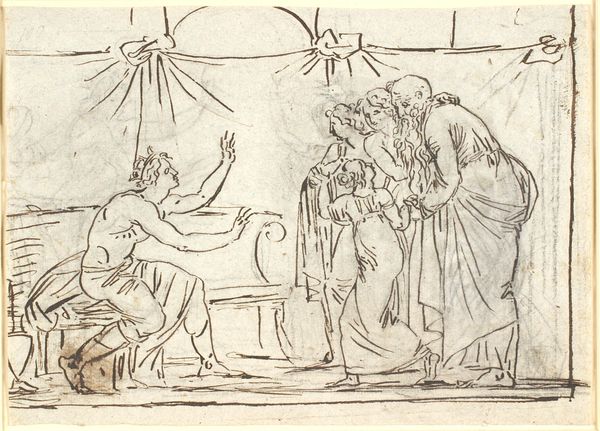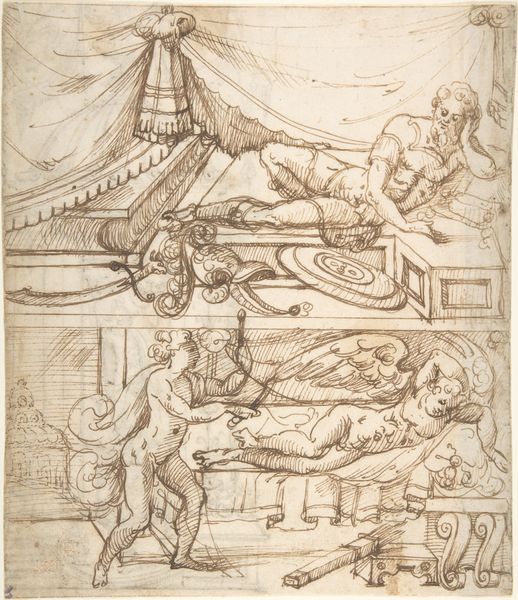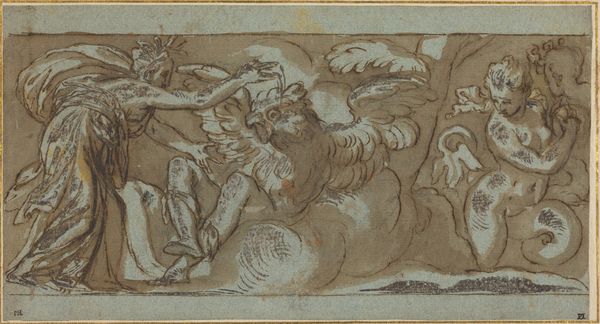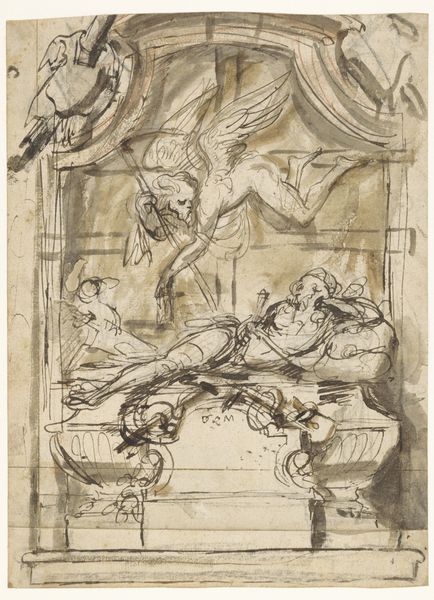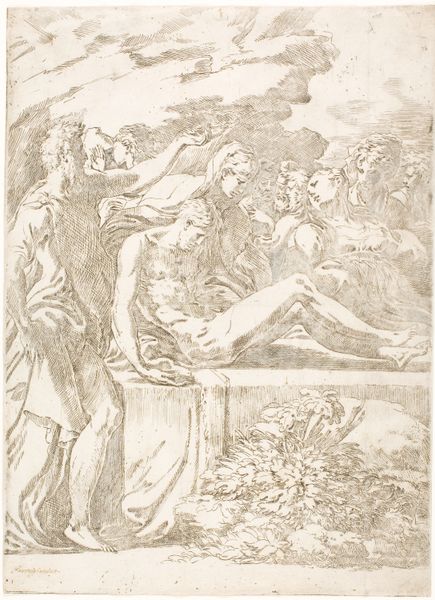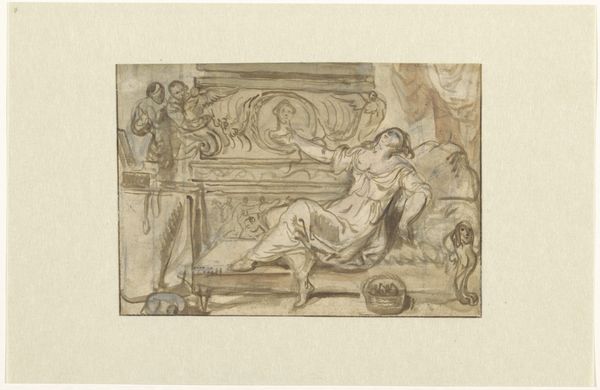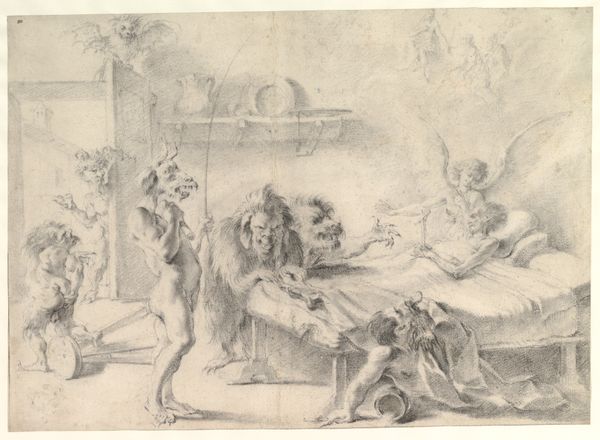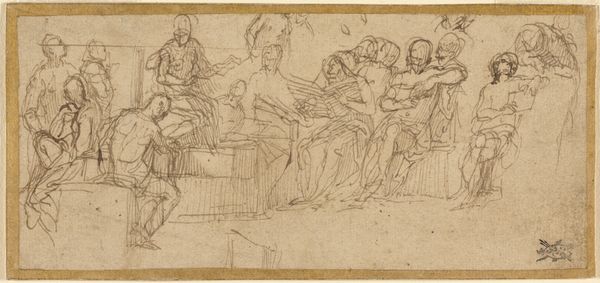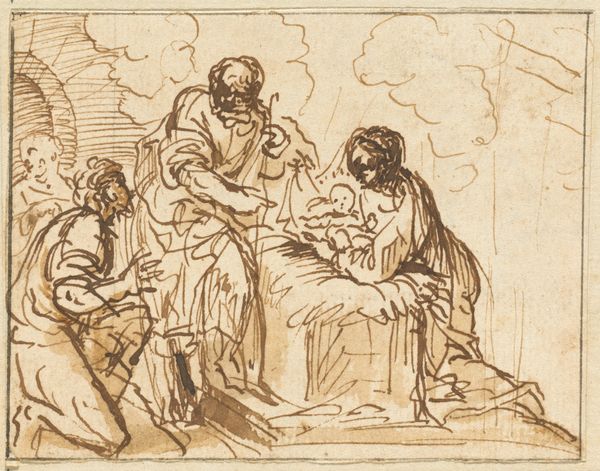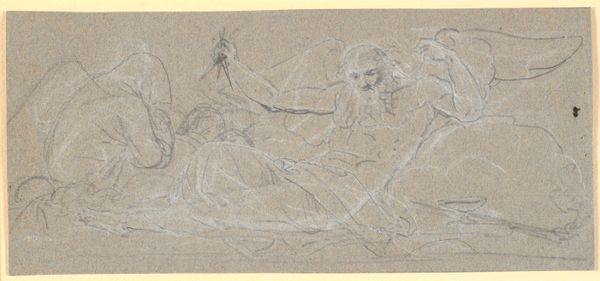
Sokrates hvilende på sit leje; i luften to svævende "daimoner" 1782 - 1785
0:00
0:00
drawing, paper, ink
#
portrait
#
drawing
#
neoclacissism
#
classical-realism
#
figuration
#
paper
#
ink
#
history-painting
#
academic-art
Dimensions: 106 mm (height) x 158 mm (width) (bladmaal)
Editor: Here we have Nicolai Abildgaard’s drawing, “Sokrates hvilende på sit leje; i luften to svævende 'daimoner',” created between 1782 and 1785 using ink on paper. It looks like Socrates on his deathbed, but the floating figures give it a surreal feeling. What do you see in this piece, beyond its obvious historical subject? Curator: The composition itself is quite striking. Abildgaard masterfully employs line to delineate form and space. Note how the linear quality doesn't just describe, but it also structures the entire visual field, almost like an architectural blueprint. What do you observe about the relationship between the earthly realm of Socrates and the ethereal plane inhabited by the daimoner? Editor: The stark contrast, of course. Socrates is rendered with tight, controlled lines, giving him weight and presence, while the 'daimoner' appear much lighter, almost floating due to the more open linework and implied movement of the drapery. Curator: Precisely. Consider, then, the effect of this formal contrast. Is it not suggestive of a dichotomy between reason and intuition, mortality and immortality, each rendered through distinct linear vocabularies? Also, what is the function of those parallel vertical lines composing the bottom part of the composition? Editor: That’s an interesting point. It could highlight the difference in approach of the neoclassicist artists towards form? Curator: Yes, partly. It is visually interesting the artist decided to focus on it! And look at how the objects around Socrates are clearly delineated and rigidly laid down. It looks like an architect's elevation. Do you think Abildgaard sought to emulate Classical sculpture in his drawing style, creating a deliberate sense of ideal form through line alone? Editor: Definitely. The way he models Socrates’ body and the figures above feels very reminiscent of classical friezes, almost as if he is trying to capture that sculptural quality on paper. Curator: Indeed. This work showcases how formal elements like line, composition, and contrast contribute to the work's overall meaning and impact, far beyond mere historical representation. Editor: I never thought to appreciate how the formal aspects themselves can tell such a strong story.
Comments
No comments
Be the first to comment and join the conversation on the ultimate creative platform.
